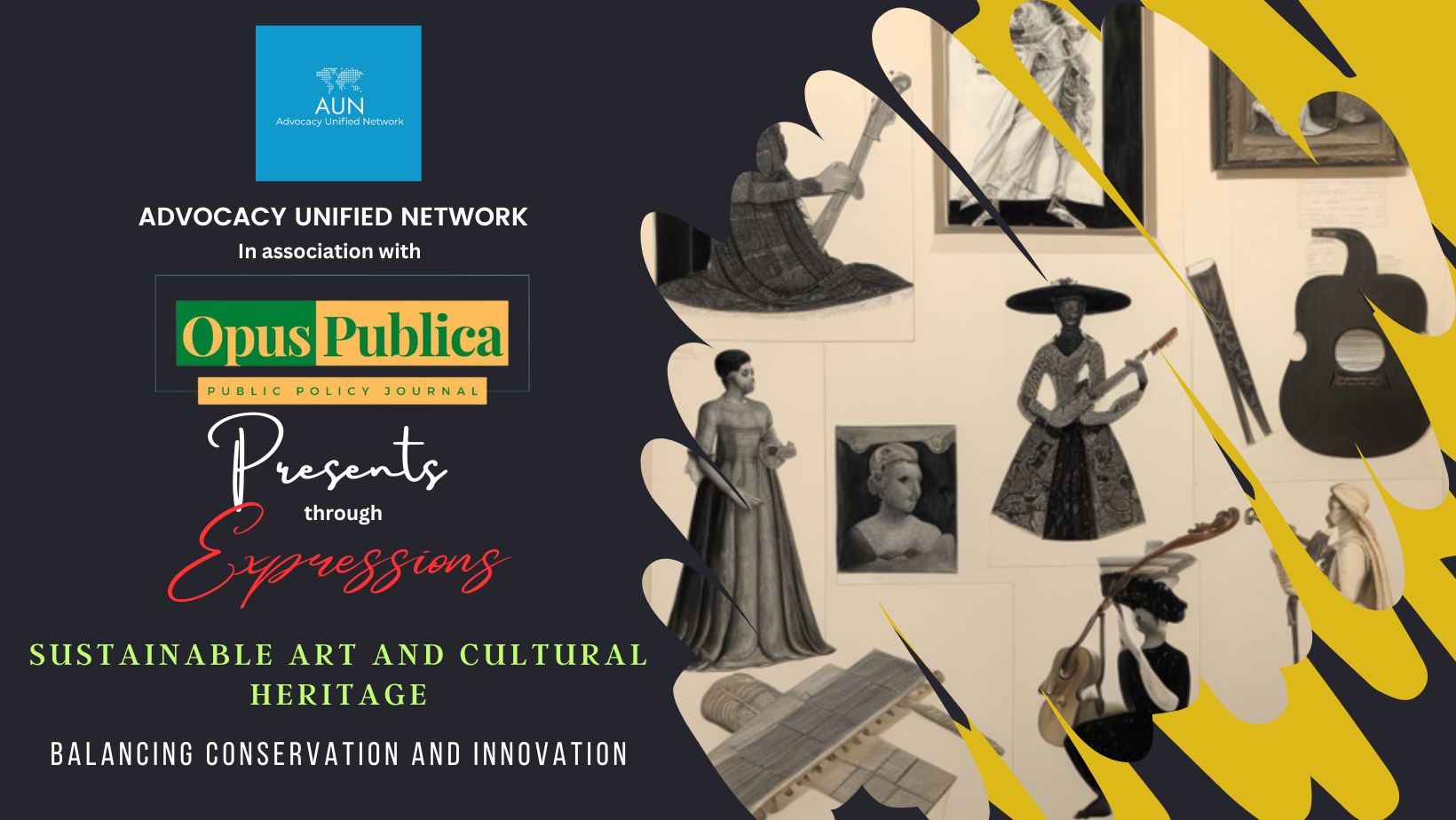Introduction
The study “Sustainable Art and Cultural Heritage: Balancing Conservation and Innovation,” written by Priyasa Banerjee and published in Opus Publica, offers a thorough analysis of the precarious balance between conservation and innovation in the field of preserving art and cultural heritage. The study explores the significance of sustainable practices and their function in addressing the difficulties associated with the preservation of artistic creations and cultural heritage while encouraging creativity and adaptability in the industry.

Key Findings
The research paper presents key findings that shed light on the significance of sustainable approaches in art and cultural heritage preservation. The exploration of traditional conservation methods reveals their valuable contribution to preserving cultural heritage but also highlights their environmental and social impacts. The introduction of sustainable practices offers a promising alternative by minimizing these negative effects and promoting long-term preservation.
Furthermore, the analysis of innovative technologies, materials, and techniques demonstrates their potential to enhance conservation efforts. Digital preservation methods, in particular, are highlighted for their benefits in documentation, accessibility, and collaborative research. The paper acknowledges the challenges associated with these technologies, such as technological obsolescence and data management, emphasizing the need for continuous adaptation and improvement.
Case studies presented in the paper showcase successful implementations of sustainable conservation practices, reinforcing their effectiveness in preserving cultural heritage while minimizing environmental impact. These examples underscore the importance of integrating sustainable approaches into preservation strategies and serve as valuable models for future initiatives.
Role of Policy Frameworks and Regulations
The research paper recognizes the crucial role of policy frameworks and regulations in promoting the adoption of sustainable approaches in art conservation and cultural heritage preservation. A dedicated sub-section explores the significance of policy support and governance structures in facilitating the integration of sustainability principles. The paper suggests analyzing existing policies and proposing recommendations for policy development to ensure institutional support for sustainable practices.
Implications and Future Directions
The paper concludes by highlighting the importance of striking a balance between conservation and innovation in sustainable art and cultural heritage practices. It emphasizes the need for ongoing research, investment in technology and training, stakeholder engagement, and policy development. The implications of sustainable practices, including reduced carbon footprint, community empowerment, and enhanced cultural diversity, are discussed.
The research paper provides valuable insights into the challenges, opportunities, and potential strategies for achieving sustainability in the field of art and cultural heritage preservation. By identifying successful case studies, analyzing policy frameworks, and emphasizing the role of stakeholders, the paper contributes to the ongoing discourse on sustainable approaches in this domain. The recommendations for further research and action provide a roadmap for future endeavours aimed at preserving our shared cultural heritage while embracing the evolving dynamics of the contemporary world.
Overall, Priyasa Banerjee’s research paper makes a significant contribution to the understanding of sustainable art and cultural heritage practices. Its comprehensive analysis, supported by case studies, statistical data, stakeholder perspectives, and international perspectives, enhances the credibility and depth of the research. The paper is well-structured, logically presented, and offers valuable insights for researchers, practitioners, and policymakers interested in the conservation and innovation of art and cultural heritage.
Commentary by:
Francisca Oliviera

https://orcid.org/0009-0002-1103-7725
Citation
Oliviera, F. (2023). Commentary on the Research Paper – Sustainable Art and Cultural Heritage: Balancing Conservation and Innovation. Advocacy Unified Network. https://doi.org/10.57939/E1E6-2D08





